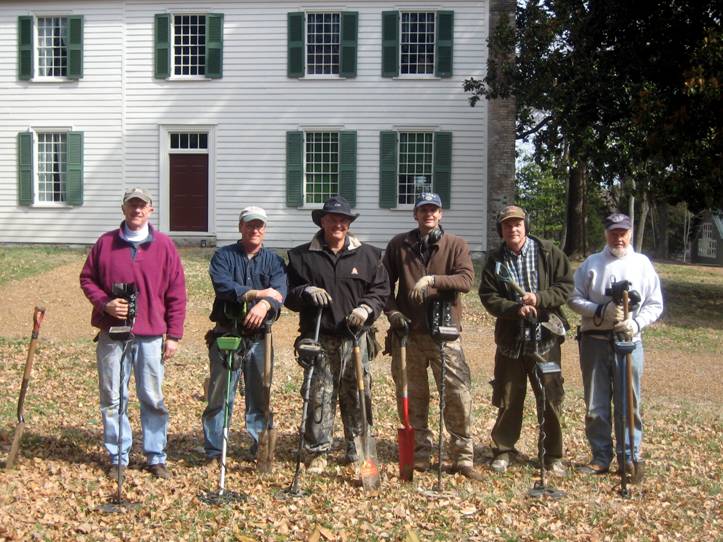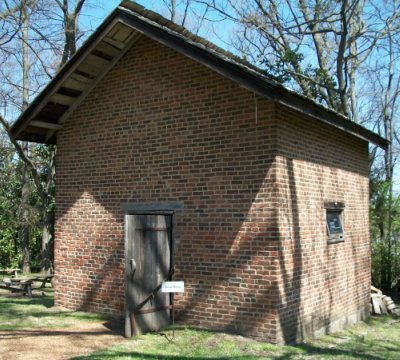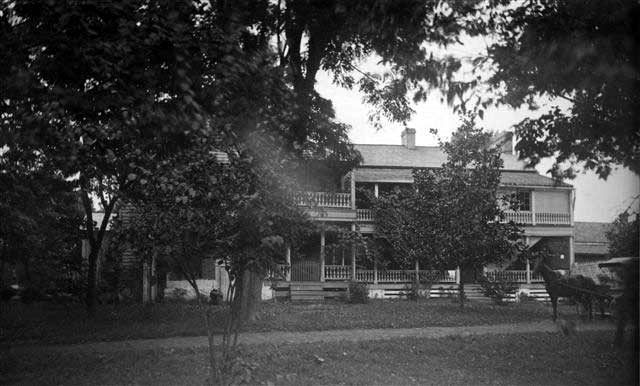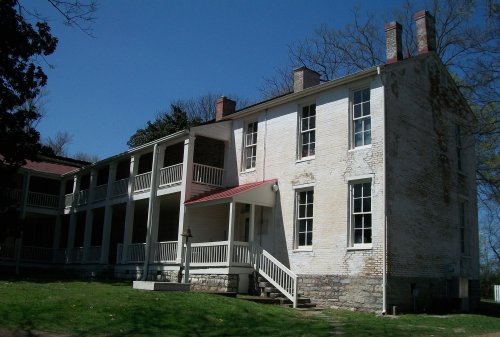Travellers Rest, the plantation home of Judge John Overton and headquarters of Confederate General John Bell Hood, is one of Nashville’s most historically important houses and the most significant of those involved in the Civil War era and the Battle of Nashville. Below is a brief history of the plantation taken from Guide To Civil War Nashville, the Battle of Nashville Preservation Society’s premier guide to the Battle as written and researched by Mark Zimmerman.
Because of Travellers Rest’s significant role in the Battle of Nashville, it was only natural that TR and BONT would establish a mutually supportive relationship regarding the beautifully preserved home and grounds. BONT members have provided numerous Civil War artifacts, ranging from artillery shells to rifles and many interesting pieces in between, currently on loan and on display in the TR Museum. The Gift Shop at TR sells numerous BONT publications, and one BONT board member, Jim Kay, also serves on the TR board.
In 2009, TR requested BONT to use its collective artifact-hunting skills to scour the property in search of items left behind by the armies that occupied the plantation’s 1000 acres in 1864. BONT donated 30 metal-detecting man hours to TR and the resulting collection of artifacts, mainly Civil War bullets, were retained by Travellers Rest as reminders of the military conflict that occurred there in December, 1864.

Above: In the Fall of 2009, TR requested BONT to search the plantation grounds for Civil War artifacts. Pictured above from left to right are: Mark Beveridge, Pete McAlister, Jim Kay, Jim Wall, Mark Swann, and Fowler Low.
For more information on Travellers Rest, please visit http://travellersrestplantation.org/. Below is a brief summary of the plantation and its place in Civil War history by former BONT board member Mark Zimmerman:
TRAVELLERS REST PLANTATION AND MUSEUM
Built in 1799, Travellers Rest at 636 Farrell Parkway was the home of Judge John Overton, a member of the state Supreme Court. The house began as a two-story, four-room Federal-style clapboard structure with additions built in 1808, 1828, and 1887. Today, the home is finished in the period of the lifetime of Judge Overton, who died in 1833.
At the beginning of the Civil War, the home was occupied by Overton’s widow (she died in 1862), her son John and his wife Harriet and their children. The farm, worked by 80 slaves, covered 1,050 acres and was valued at $68 million (in today’s dollars). When the Union occupied Nashville in February 1862, John Overton fled his home to avoid arrest and imprisonment. Appointed to the rank of colonel by the governor before the war, Overton offered considerable financial support to the Confederate army.
Confederate Gen. John Bell Hood arrived from Franklin on Dec. 2, 1864, and made Travellers Rest his headquarters. From here, he directed the building of a five-mile defensive line south of the Union-occupied city. Also here, he met on Dec. 8 with Gen. Benjamin Franklin Cheatham, who offered his apologies for miscommunications which allowed the Federal army to escape at Spring Hill on Nov. 29.
At Travellers Rest, Mrs. John Overton hosted a dinner attended by Gen. Hood and five other generals following the marriage of one of Hood’s staff officers.
During the Battle of Nashville, the women and children huddled nervously in the cellar awaiting the outcome, Gen. Hood having relocated his headquarters to the west. The Confederate lines collapsed and the retreating army moved past the house, followed by Union soldiers. On the night of Dec. 16, Union Gen. W. L. Elliott slept in the same bedroom occupied earlier by Hood.
Travellers Rest is owned by the Colonial Dames of America in Tennessee and is listed on the National Register of Historic Places.
________________________________________________________________
Travellers Rest — Wikipedia.
In 1799, the two story structure with four rooms was built by Judge John Overton (1766–1833). Overton was an advisor and close friend of Andrew Jackson, judge at the Superior Court of Tennessee and co-founder of Memphis, Tennessee. Overton originally named the property Golgotha after the large number of prehistoric skulls that were unearthed while digging the cellar of the house. Archaeologists now know that these remains were part of a large Mississippian village site. Overton changed the name of the plantation to Travellers Rest in the early 19th century to reflect the recreational effect his home had on him after the long rides on horseback that he had to undertake as a circuit judge. Overton died at Travellers Rest on April 12, 1833.

Above: Traveller Rest Smoke House
At the beginning of the Civil War, Overton’s widow occupied the home until her death in 1862. After her death, her son John and his wife Harriet and their children continued to occupy the home. The plantation’s farm, which covered 1,050 acres and was worked by 80 slaves, was valued at $68 million during this time.
The plantation building was saved from demolition and restored in 1954 to become a museum. Additional archaeological finds were reported from the property as recently as 1995, when construction at the visitors center resulted in disturbance of additional human burials.As of 2008, the Travellers Rest Plantation & Museum houses exhibits that document the life and work of John Overton, the history of the Overton Plantation and Nashville in the Civil War. It is located at 636 Farrell Parkway in Nashville. Travellers Rest is listed on the National Register of Historic Places

